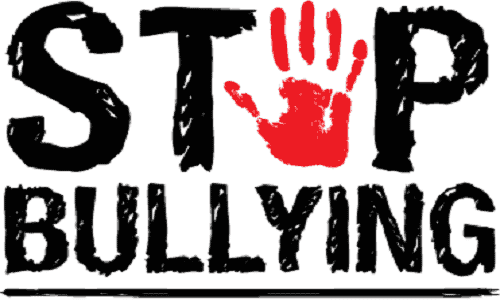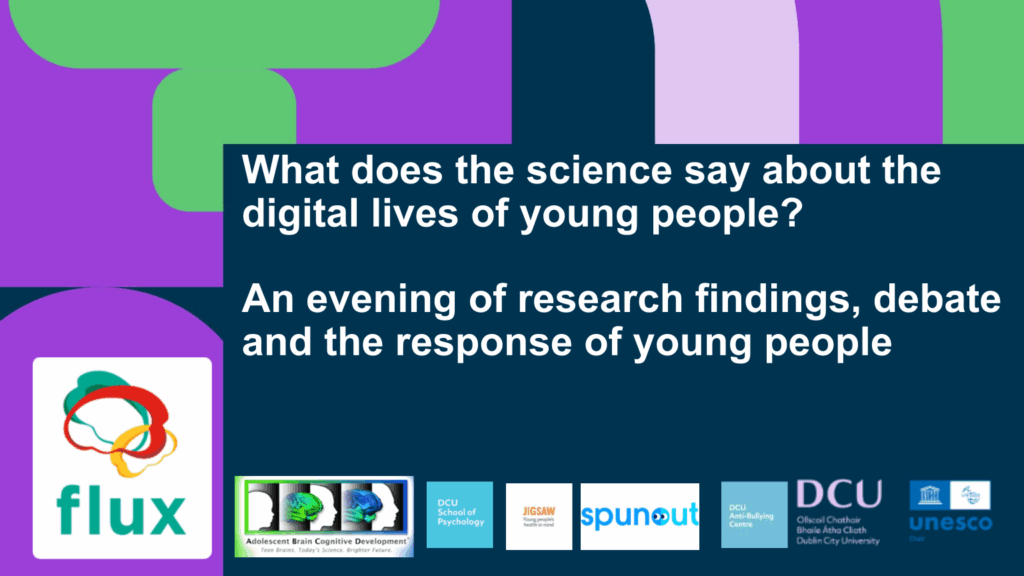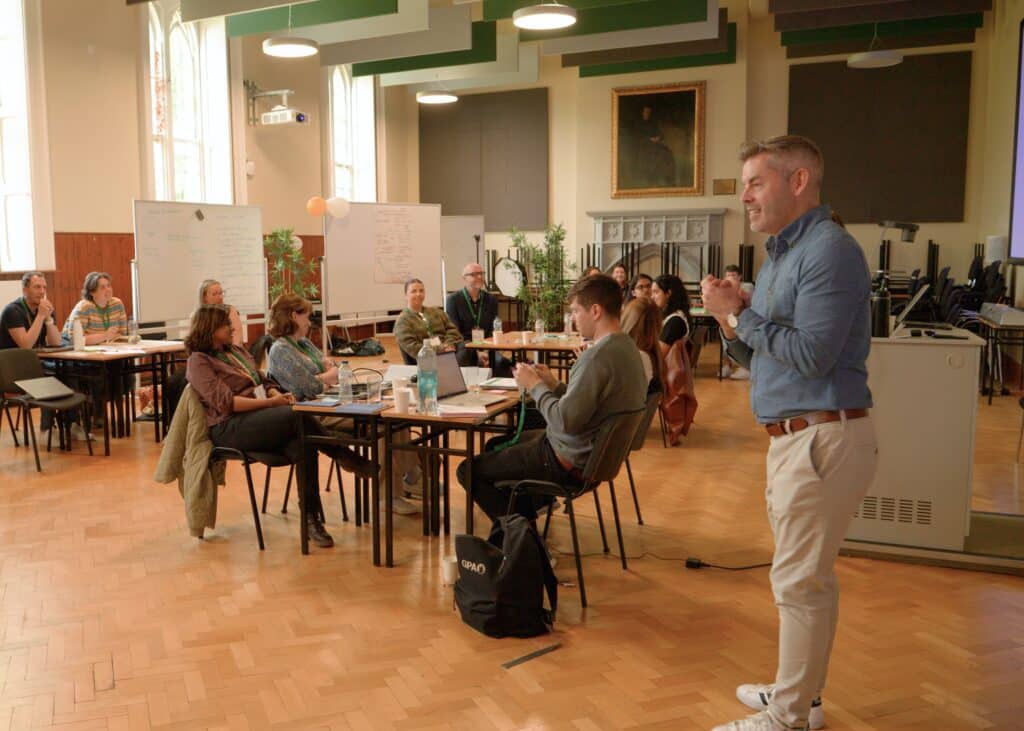Changing the Paradigm for Cyberbullying Intervention and Prevention: Considering Dignity, Values, and Children’s Rights
By Tijana Milosevic & Anne Collier
In a recent parliamentary hearing about bullying and cyberbullying in Ireland,[1] parliamentarians raised concern that these behaviors should remain such a prevalent problem, even after all these years of research, and concerted prevention and intervention efforts. As online safety researchers and practitioners in Europe and the United States, respectively, we are also frequently met with the worrying eyes of parents and caregivers and the inquisitive ones of journalists, who wonder how come, after all these years of extensive work, we cannot seem to put an end to bullying and cyberbullying?
In this article, we trace the often-unstated philosophical assumptions about cyberbullying which may inform intervention and prevention efforts and hamper their outcomes. We propose, and here outline, a different approach to addressing cyberbullying, one based on human dignity – and thus each child’s dignity – which we think has paradigm-shifting potential. “Dignity” implies the inherent worth of every human being, which, unlike respect, does not have to be earned. As such, it is a birthright. In a way, we can think of it as the opposite of humiliation, which implies reducing a person in others’ eyes. We suggest that, in order to understand cyberbullying, we need to go beyond “aggressive acts” and recognize the normative values that set the conditions of social relations, including social aggression and public humiliation – not only among children and youth, but among adults as well. If we posit bullying and cyberbullying as an attack on a person’s dignity, based on rankism, then we’ll see that what enables school bullying and cyberbullying is the same system of relational patterns that enables workplace bullying and so-called micro-aggressions later on in life.
This article looks at definitions and perceptions of cyberbullying, cyberbullying behaviors as dignity violations, the difference between dignity and “false dignity,” two cyberbullying scenarios that illustrate dignity violation and how considering dignity as a factor in cyberbullying incidents illustrates why defining cyberbullying merely as an online safety issue limits the scope of possible remedies. Finally, we explain why it is important to consider dignity when designing cyberbullying prevention and intervention measures, as online platforms increasingly move towards employing artificial intelligence to address the problem.
The struggle over definitions
Cyberbullying, or online or digital bullying as it is sometimes called, derives its definition from offline or face-to-face bullying. Influential definitions refer to it as “willful and repeated harm inflicted through the use of (…) electronic devices”[2] or “an aggressive act or behavior that is carried out using electronic means by a group or an individual repeatedly and over time against a victim who cannot easily defend him or herself.”[3] The field is riddled with definitional disagreements, and researchers have recently pointed out that, when we think of bullying and cyberbullying as subsets of aggressive behaviors, we imply that “bullies are aggressors,”[4] which confines the issue to problems and behaviors within an individual, downplaying the factors arising from group dynamics and, most importantly, the broader community and social and cultural contexts. Furthermore, “power imbalance” was considered an essential component of bullying, but this has been revisited in the cyberbullying literature. The so-called victim had to be less powerful than the perpetrator in some way – for example, by being smaller in size (offline) or having less social capital. Online, this could translate into having a larger network of supporters, more likes (suggestive of higher rank or status), exploiting anonymity or being more digitally skilled and hence effective in attacking the so-called victim.
Power imbalance was said to be one of the distinguishing components between cyberbullying and conflict, which teens sometimes refer to as “drama.”[5] Nonetheless, “drama” can include what adults refer to as “cyberbullying,” as research shows that teens do not necessarily like to identify with this adult-centric term. The lines can be blurry, but our argument for leveraging dignity brings clarity by taking the focus off the distinction between behavior types* – cyberbullying and conflict that belittles another human being – and keeping our focus on the driving forces (dignity violations and rankism) behind both. Moreover, many of us have seen that our adult-centric methods of addressing cyberbullying are limited in effectiveness, anyway.
Research has shown the importance of the so-called bystander as a contextual factor in cyberbullying,[6] with their opportunity to assist the victim and influence the outcome or the amount of harm that could arise from cyberbullying incidents. “Bystander” is a term that applies to those who witness cyberbullying in some way and might choose to support the victim, support the perpetrator or remain silent. As we argue, focusing on the underlying values might assist with engaging bystanders in a constructive manner.
Bullying and cyberbullying as dignity violations: False dignity
For the above-mentioned definition of dignity and for situating conflict and bullying in the context of dignity, we have many scholars to thank, including Drs. Robert Fuller[7] and Pamela Gerloff,[8] Dr. Donna Hicks[9] and the many researchers and activists of the Human Dignity and Humiliation Studies Network led by Dr. Evelin Lindner and Dr. Linda Hartling.[10] Bullying and cyberbullying can be considered a form of “rankism”[11] or abuse of rank or power. While there is nothing wrong with rank per se (as humans are differently abled and no one is good at everything, someone typically needs to lead, and some people are more popular or entertaining than others). Rather, it is the abuse of the power that comes with rank which constitutes a violation of dignity.
Equally problematic is deriving one’s feeling of self-worth from one’s advantages and thinking of others as “less” than oneself. This thinking relates to the concept of “false dignity” as conceptualized by Dr. Hicks,[12] “the belief that our worthiness comes from external sources,” such as needing praise or approval from others to feel good about oneself; desiring high status positions to show to self and others that one is successful or worthy; or thinking that one is better than others, due to class, race or ethnicity, income, property or physical appearance. In other words, false dignity relies on external validation. We see false dignity as an important psycho-social and cultural driver of bullying and cyberbullying.
From false dignity to dignity
We live in a culture where certain achievements or traits such as good looks, money, success and power tend to be valued; and, crucially, they tend to imply a self-worth based on power imbalance – power over another. Even in terms of dignity, it’s the belief that “haves” own more of it than “have-nots.” Where cyberbullying is concerned, technology design mirrors these assumptions and values in the form of encouraging more follows, “likes,” “shares” and overall attention (where attention from others is a dignity-securing value). So perhaps it is not a surprise that thinking of the so-called “have nots” as less than oneself may contribute to cyberbullying. On top of that, in offline communities (such as schools), the climate is such that bullying and cyberbullying may raise one’s social status in the eyes of others, hence blended online and offline cultural context encourages bullying and cyberbullying even in communities where a bullying prevention program discourages such behaviors. Much work has been put into changing the “school climate”[13] for bullying and cyberbullying prevention and intervention and implementing social-emotional learning-based[14] programs to teach about emotional regulation and empathy. Nonetheless, our argument goes beyond such interventions: It is not enough to teach children (or adults, for that matter) that it’s not acceptable to increase status through cyberbullying; as a field, we need to be able to agree that we do not need to rise in status in order to have dignity and to treat others with dignity. Dignity is inherent, not earned. Designing interventions that would stimulate the adoption of such a worldview in a way that resonates with children and teens is what we are proposing. This would also mean an active effort to reexamine the values that we as adults hold, or we risk hypocrisy. Cyberbullying seen through a relational and values-based lens has little to do with aggression. A bullying or cyberbullying act in itself might be aggressive, but merely getting rid of the aggression will do little to solve the broader and underlying problem that gives rise to it. False dignity and the cultural factors related to it are rarely a focus of research in the bullying and cyberbullying literature, and they are one of the driving forces behind these phenomena.
Cyberbullying: Not just an online safety issue – or even a safety issue
The authors of this text have previously argued[15] and research has confirmed[16] that online safety, which includes education about various forms of online risks, including cyberbullying (but also, e.g., grooming, sexting and privacy risks) should be administered not as a separate/distinct area of training, but rather within the already established risk-prevention programs for their associated offline risks (e.g. bullying prevention for cyberbullying, sexual health education for sexting, etc.). In other words, what happens “online” is not divorced from the offline context or “the real world,” as it is sometimes called – although online is no less “real” than offline, not only for teens but for everyone. Telling teens to switch off their phones and get back to the “real world” to minimize the risks or avoid cyberbullying will do little to address the problem. Cyberbullying tends to go hand in hand with offline bullying in the school context – they tend to overlap and cyberbullying can be an extension of an offline incident.[17] While we can aim and try to regulate for safe, cyberbullying-free environments, cyberbullying is not only about freedom from online harm, as the argument we outline above shows; it is about the underlying cultural values around worth and success; and it is a relational issue too. It is about how young people view themselves in relation with others, as well as how they see and treat each other, based on what we believe and have modeled for them about how to attain worth and success. Viewing cyberbullying merely as a matter of tech features, online behavior or an “online safety” issue severely limits our thinking in terms of finding solutions to this problem.
Dignity is especially important to consider at this point in time, with growing recognition that states and other stakeholders, especially social media and technology, need to help ensure a balance of children’s rights to protection (online as well as offline) with their rights of participation and provision, as enshrined in the UN Convention on the Rights of the Child[18] – and as the Committee for the Rights of the Child has just (Feb. 4, 2021) adopted the first General Comment on youth digital rights.[19]
Dignity-oriented AI design to address cyberbullying on online platforms?
From a technological standpoint, considering cyberbullying through the lens of dignity is especially important now, when social media[20] and other platforms are increasingly relying on artificial intelligence (AI) based tools to address user safety. Our assumptions about the problem or lack of a holistic understanding of the issue can seep into the design of proposed technological remedies such as this. Recent design innovations around community moderation[21] promise an alternative to the dominant centralized moderation model currently used by social media platforms, and testing these with teen audiences could provide a good avenue for further research. We invite researchers across disciplines and especially those in the field of computing – specifically machine and deep learning – to consider the problem not just from the perspective of keeping children and teens safe, but also from the perspective of their right to participation. To go a step further, we invite stakeholders to consider what it would mean to think of cyberbullying from the perspective of promoting a dignity-based environment where self-worth does not hinge upon external validation and tech symbols thereof. What would it take to create a society and media environment where we can all feel worthy and valuable regardless of our position in society, the attention we garner or the number of likes and shares we receive?
Dignity violations: Examples
Consider a hypothetical yet common example of a Steven, 14, who posts a video of himself dancing on a social media platform. He loves to dance, even though he doesn’t consider himself to be good at it, but he’s trying to improve. He is not very popular; he is very insecure and does not have a strong support group among his peers. Yet, to his credit, Steven tries to get out of his comfort zone and explore who he could become by posting the video. A lack of a sense of dignity and self-worth might be motivating his actions too. Subsequently, he gets laughed at and humiliated in comments by his peers; someone remixes his video into a derisive meme which now seems to go viral; response videos mocking him are created by other peers. What drives these actions from Steven’s peers? It could be said that some are doing it “just for fun,” that some people just like to be mean, that nothing can be done about it – and that group dynamics is a factor too. But consider also that some might be commenting because they are equally insecure and did not have the courage to post their own dance video, even though they may have wanted to; and other insecure bystanders might be commenting abusively to increase their own status in a group of their peers. All of these potential reasons for dignity violations are related to seeking false dignity and feeling a lack of one’s own self-worth.
Then consider another, perhaps more subtle, example. Lynne, 17, is gaining popularity, reflected in more and more attention she is getting on Instagram. A close friend of hers, Sally, is increasingly jealous and cannot communicate that to Lynne. She does not feel good about herself as compared to her friend anymore. She invites a close group of friends to a sleepover and deliberately neglects to invite Lynne. She even shares a few very subtle negative comments with other girls about Lynne’s makeup and looks. Lynne finds out about the sleepover through a photo on Instagram. It seems like other girlfriends are starting to act a little distant too. She feels hurt and starts to question her Instagram activity. She posts less, overthinks each post and worries. Is Lynne a victim, and should she be treated as such? She probably would not want to consider herself or be described as a victim – it could negatively affect her sense of self-worth, especially since victims of bullying tend to have lower social status. Let alone tell her parents, who in her view would only make a mountain out of a molehill. This case does not even meet the basic definition of cyberbullying; it is not repeated and the social exclusion is not overt (her peers had not tagged Lynne to show her she was on the outs). Sally may not even be aware that she is doing all this to hurt Lynne, she might be acting instinctively to protect and strengthen her own sense of self. Some scholars would argue that Lynne needs to build resilience, and this is a good opportunity to do so[22] – after all, there will be many jealousies and betrayals in life. This is certainly true, but our point is different: Why should adults posit such situations as a normal part of the growing up process? Why would Sally need to trample over a peer’s dignity to feel better about herself? Why can’t we see both Sally and Lynne as having dignity, regardless of their looks, successes, popularity and the like – and help them and their peers see that?
Looking at these scenarios in the context of dignity theory gives rise to some important questions about past approaches to bullying and cyberbullying and how we might move forward:
- Do we default to accepting these belittling behaviors because we see them as inherent to human nature and group dynamics, and therefore inevitable?
- Can we rather think of belittling or rankist behaviors as a pattern of behavior that humans are socialized into rather than inherent to being human (or at least a blend of socialized behavior, environmental context and inherent to human nature)?
- Does our collective struggle to resolve the longstanding problem of bullying/cyberbullying stem in part from our confusion over these questions, expressed in what we model for children through our own social behaviors and confusion thereof?
- Is resilience development actually bullying prevention or is it a fortification against bullying and dignity violation that we’ve accepted as inevitable – in effect, a stop-gap measure to use while we figure out effective prevention and intervention?
- Do we accept the notion that, in terms of child development, resilience comes only with adversity, so we both vilify and accept social cruelty at the same time, sending our children confusing mixed signals, e.g., “Don’t be mean’ and ‘what doesn’t kill you will make you stronger’?”
However our field might answer these questions, we propose that giving them thoughtful consideration is vital to moving toward solutions to this social problem, because how we think of the behaviors illustrated in the above scenarios will influence the design of interventions and solutions that we deem effective. There appears to be growing acknowledgement that resilience will help children muscle up when they experience such situations as adults in a workplace. These “little indignities” that are often accepted as a given include, for example, ignoring a colleague’s ideas at work; excluding them from opportunities; or talking badly about a colleague behind their back, even if they are not doing anything wrong. If we accept these behaviors as a normal component of human nature, school and the workplace, such thinking will limit our – and our children’s – options for creating real social change. Building resilience is of course important but beside our point. The issue, here, is: Does it have to be this way? And what are we teaching children and young people about the way life has to be?
Living by dignity standards: What it might look like in practice
Coming back to the two incidents with Steven and Lynne, one might wonder what these cases would look like if children were taught their protection and participation rights (both online and offline), based on the dignity framework. What would social relations look like if we were to teach young people about their dignity and that of all human beings? Steven might have been more aware that he was posting a video in order to receive validation from others and choose not to. He might also have felt safe to be himself, knowing that others would less likely to belittle him for it. Sally would have been happy for the attention that her friend received, knowing that it does not undermine her own sense of self-worth. She might not have felt the need to put Lynne down and, in turn, Lynne might have felt safe and accepted to continue participating online.
Some would argue that a dignity-based approach to social relations that we are proposing here is contrary to power-seeking aspects of human nature as outlined by Hobbes, for instance. Others would argue that teaching dignity in this manner will not be effective because society and the world of adults are not based on it, because it won’t resonate with children and teens or that the dignity framework is idealistic. That might well be true, but we will not know unless we give such education a try, and there is growing frustration with the lack of progress to date. Most importantly, it is not only children and youth who would need to adopt the dignity framework for it to work; it is essential that adults consider what the adoption of such values would mean for society as a whole in practice.
Conclusion
There is no better time to explore a different, more holistic, approach to preventing social cruelty based on human dignity – with ever greater adoption of technology, a reported mental health crisis among youth[23], children returning to school as the pandemic slowly subsides and heightened social tensions in and between societies. Such an approach takes into account issues of self-worth, relational norms, cultural factors and the conditions of children’s digital, home and school environments, as well as their human and digital rights. For example, rather than stressing faults within individuals, can we consider how relationships are structured in late modern society and how unstated values that inform a person’s sense of self-worth[24] can lead to violations of peers’ dignity? Rather than focusing merely on stopping aggressive behaviors, might we consider the motivations for such behaviors and the values and cultural factors behind them? As for digital environments, they mirror our attention-driven economy and society, which make attention – digitally signaled with likes, shares, follows and virality – a value and therefore a tool (or weapon) of status and self-worth. Rather than treating digital environments like “school,” as just another “place’ where social cruelty occurs, might we consider the influences of platform features, business models and the attention economy on young people’s sense of self and treatment of one another? We strongly urge our field to take up these questions and consider adopting a dignity framework for bullying/cyberbullying prevention, based on the hypothesis that doing so would send clear instructional signals, support healthy relationships among children and grow their capacity to create positive change in their own communities both digital and physical.
*Explanatory endnote: Dignity scholars tend to describe conflict and rank as inevitable in society, rank [being a common] organizational unit. However, once someone abuses their rank thinking they are better than someone else and treating another as if they were less, these become expressions of rankism. Whereas, disagreement, conflict and emotions arising out of disagreement/conflict are not rankism or violations of dignity, as long as one party to the conflict is not acting from the belief that they are superior.
References:
[1] https://www.oireachtas.ie/en/debates/debate/joint_committee_on_education_further_and_higher_education_research_innovation_and_science/2020-11-05/3/
[2] https://cyberbullying.org/cyberbullying_fact_sheet.pdf
[3] https://acamh.onlinelibrary.wiley.com/doi/full/10.1111/j.1469-7610.2007.01846.x
[4] https://journals.sagepub.com/doi/pdf/10.1177/1461444818810026
[5] https://www.tandfonline.com/doi/abs/10.1080/13676261.2014.901493
[6] https://www.sciencedirect.com/science/article/abs/pii/S0747563213003865
[7] https://www.breakingranks.net/biography/
[8] https://www.breakingranks.net/about-pamela-gerloff/
[10] https://www.humiliationstudies.org/
[11] https://www.amazon.com/Dignity-All-Create-Without-Rankism/dp/1576757897
[12] https://www.jstor.org/stable/j.ctt5vm0gb
[13] https://psycnet.apa.org/record/2020-13333-003
[14]https://books.google.rs/books?hl=en&lr=&id=4gfHBAAAQBAJ&oi=fnd&pg=PR10&dq=social+emotional+learning+and+cyberbullying&ots=YFU_N55v9q&sig=yYjdkGXnibGGd5bvLGZObgiVmqg&redir_esc=y#v=onepage&q=social%20emotional%20learning%20and%20cyberbullying&f=false
[15] https://www.netfamilynews.org/challenging-internet-safety-as-a-subject-to-be-taught
[16] https://journals.sagepub.com/doi/abs/10.1177/1524838020916257?journalCode=tvaa
[17] https://psycnet.apa.org/buy/2014-04307-001
[18] https://www.ohchr.org/EN/HRBodies/CRC/Pages/GCChildrensRightsRelationDigitalEnvironment.aspx
[19] https://blogs.lse.ac.uk/medialse/2021/02/04/childrens-rights-apply-in-the-digital-world/?fbclid=IwAR3W38t2ipGLwBHM4plnaez6HqSgMpKfk2cCshvPvXg1dJV7mreF4ZBOPf4
[20] https://time.com/5619999/instagram-mosseri-bullying-artificial-intelligence/
[21] https://dl.acm.org/doi/fullHtml/10.1145/3313831.3376293
[22] https://cyberbullying.org/cultivating-resilience-prevent-bullying-cyberbullying



